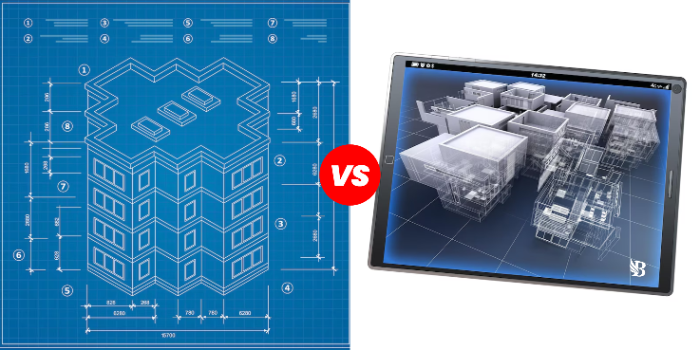
The Rise Of Immersive Technology in AEC Industry: VR, AR, and XR Explained
In the rapidly evolving AEC (Architecture, Engineering, and Construction) industry, staying ahead means more than building faster—it means building smarter. One of the most exciting advancements driving smarter construction is immersive technology: Virtual Reality (VR), Augmented Reality (AR), and Extended Reality (XR). These tools are no longer futuristic buzzwords—they’re transforming how teams plan, build, train, and collaborate today.
VR, AR & XR in AEC: What’s the Difference?
VR (Virtual Reality): Creates a fully digital environment where users can explore building designs and project sites in 3D using headsets. Ideal for design reviews, preconstruction walkthroughs, and client presentations.
AR (Augmented Reality): Overlays digital information (like BIM data or 3D models) onto the real world using smartphones or smart glasses. This helps onsite teams visualize hidden utilities or align installations.
XR (Extended Reality): A broader term combining both VR and AR, allowing seamless interaction between the physical and digital world—enabling real-time collaboration across locations.
Why Immersive Tech Matters for Modern AEC Projects
Better Design Understanding:
Immersive walkthroughs allow stakeholders to experience the design before construction. This reduces misinterpretation of plans and boosts client confidence.
Training and Safety:
VR simulations help workers practice procedures or safety protocols in a risk-free environment, increasing site readiness.
Reduced Rework and Faster Decision-Making:
Visualizing systems like MEP, HVAC, and structure in an immersive environment enables early clash detection and smarter coordination.
Remote Collaboration:
Teams across different geographies can walk through the same model in real time, using XR tools to make live annotations and decisions.
Bidlight’s Role: Making Immersive Tech Practical and Accessible
While immersive technologies are powerful, they’ve traditionally been complex, expensive, and limited to large firms with in-house tech teams.
Bidlight changes that.
Bidlight enables web-based visual coordination, BIM model exploration, and real-time design reviews—accessible via any device, without needing VR gear or high-end computers.
How Bidlight Supports Immersive Coordination:
Interactive 3D BIM Model Viewer that simulates walkthroughs on desktop or tablet.
Layer toggling and system isolation, allowing users to visualize structural, mechanical, and electrical systems in detail.
Simple link sharing so stakeholders can explore models remotely without downloading software.
Annotations and collaboration tools built in for smoother design reviews and approvals.
Think of Bidlight as a gateway to immersive AEC workflows, even for teams without full-scale VR or AR setups.
Real-World Use Case:
A general contractor needs to review the HVAC routing for a multi-level commercial space with a mechanical consultant located overseas. Instead of flying out or exporting dozens of screenshots, the team shares a Bidlight model link. The consultant navigates through the model in real time, isolates the mechanical systems, and leaves comments—all without downloading anything.
As AEC projects grow in complexity and scope, immersive technology is no longer a futuristic luxury—it’s becoming a necessary tool for delivering smarter, safer, and more efficient outcomes. Whether it's helping teams detect design conflicts early, train crews in simulated environments, or present projects with unmatched clarity, VR, AR, and XR are here to stay.
Bidlight bridges the gap between cutting-edge immersive technology and practical, everyday collaboration. With no hardware requirements or steep learning curves, Bidlight empowers every stakeholder—technical or not—to engage meaningfully in the construction process from start to finish.
Immersive. Intuitive. Immediate—That’s the Bidlight difference!